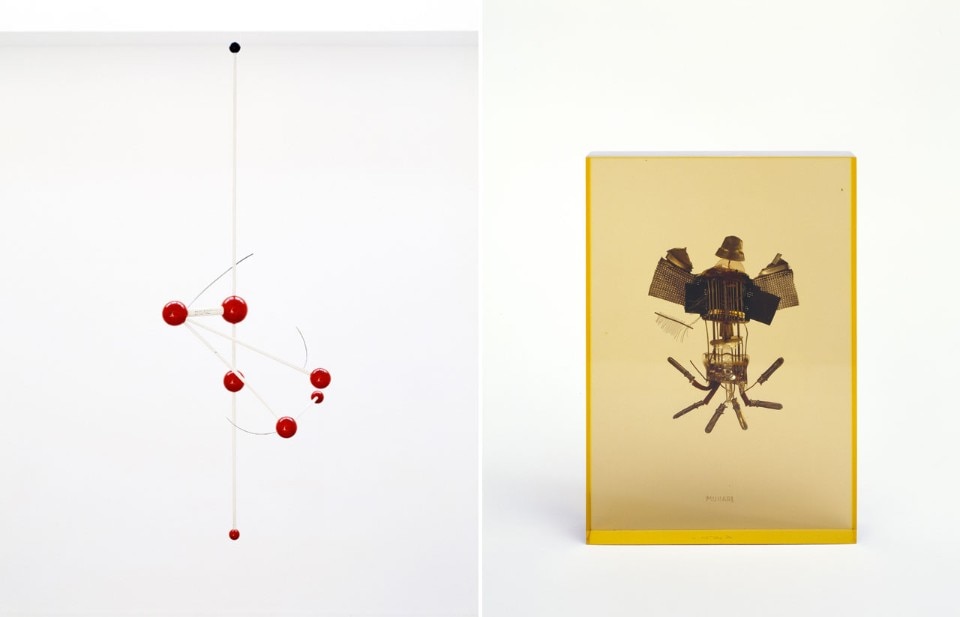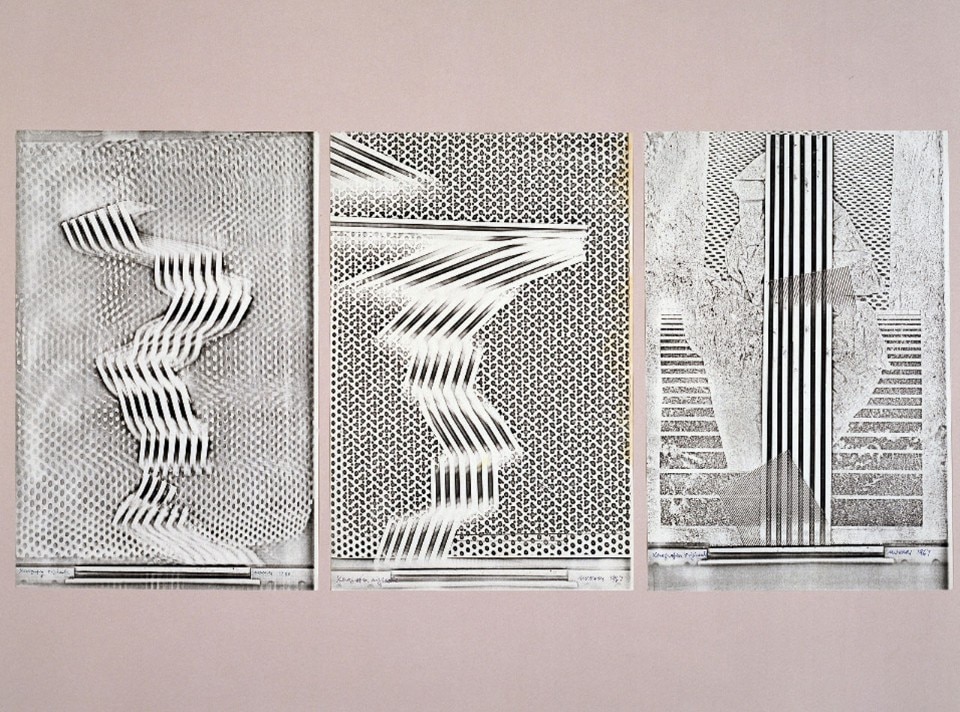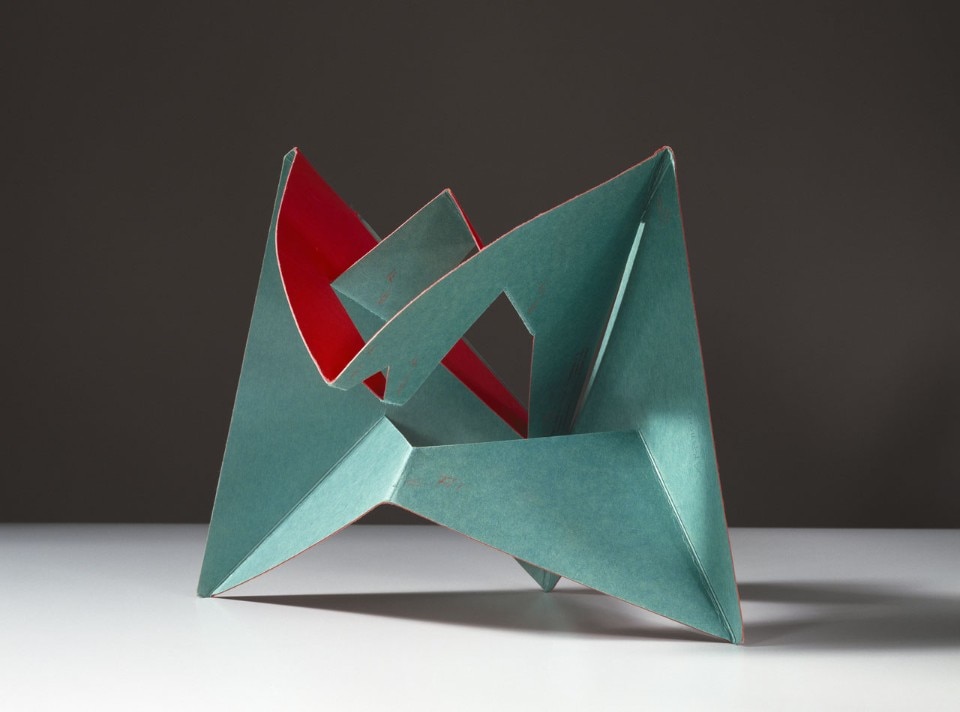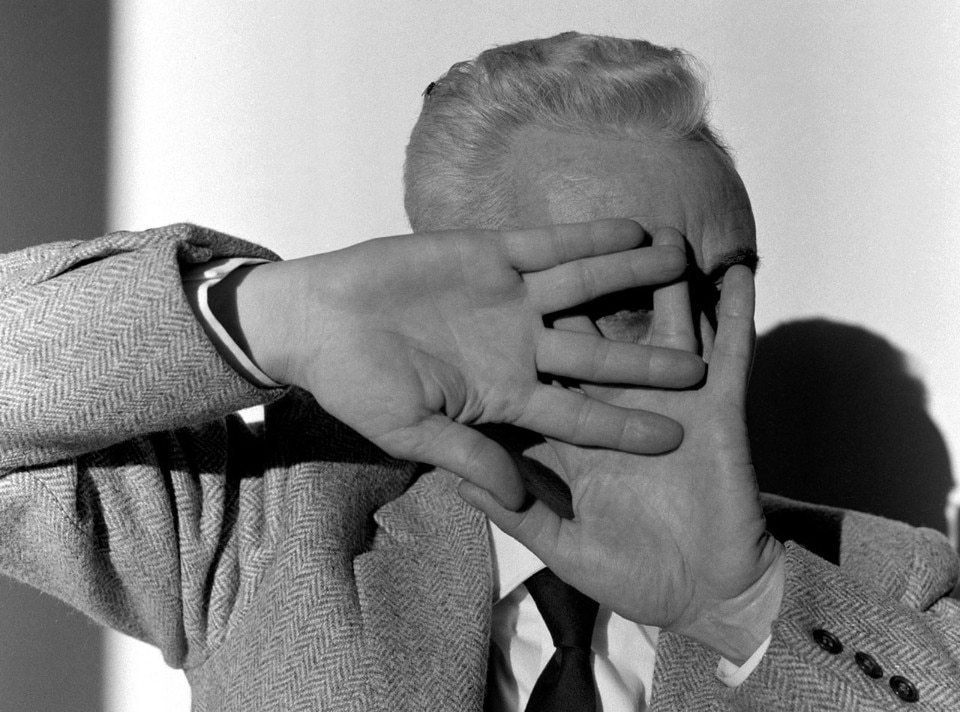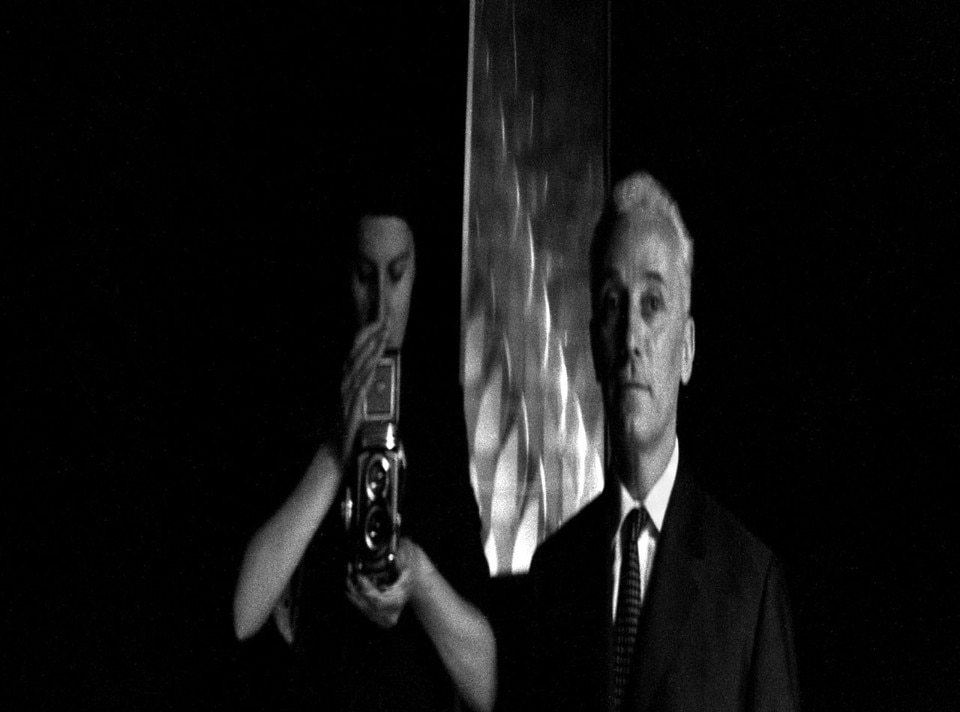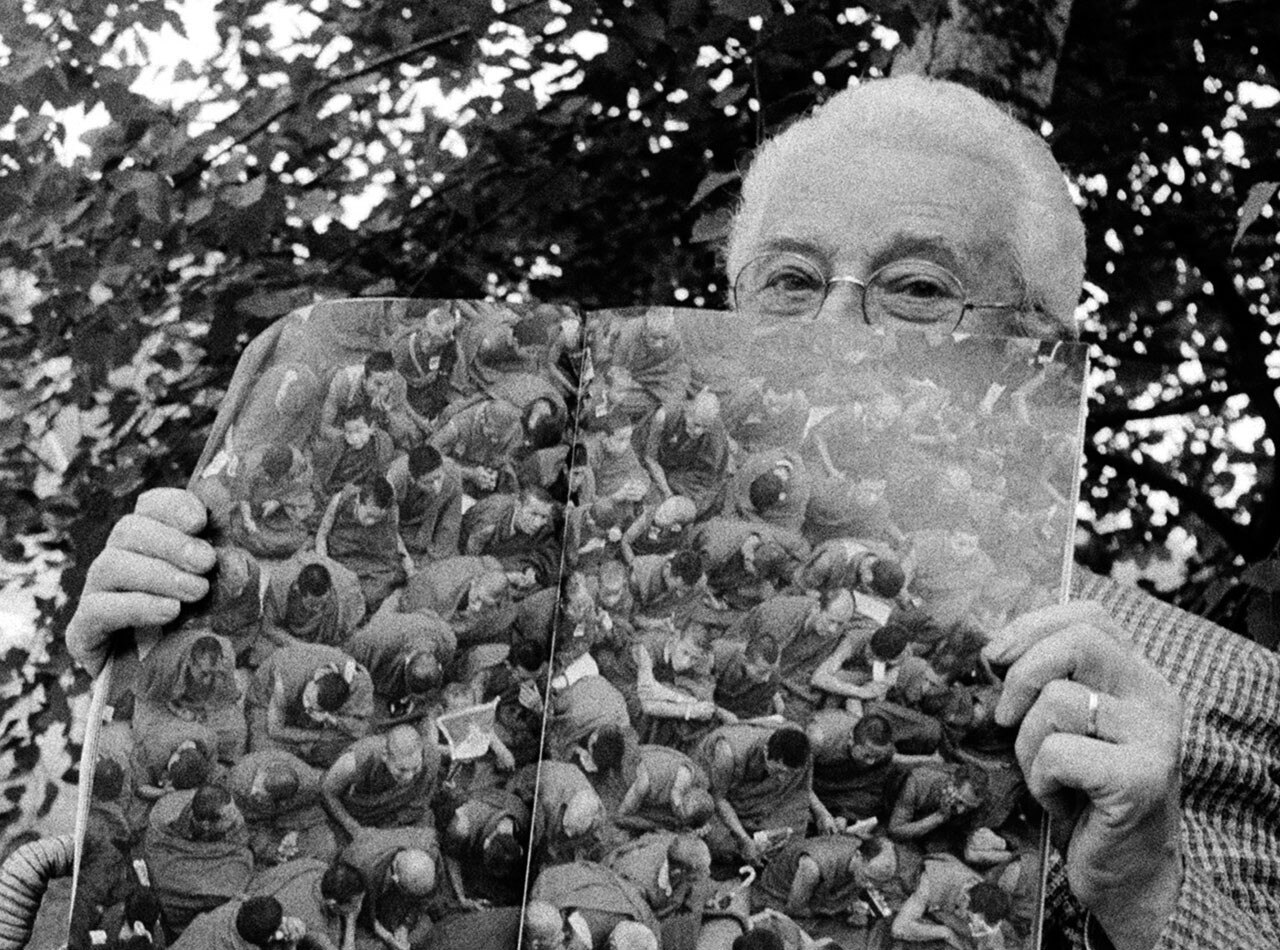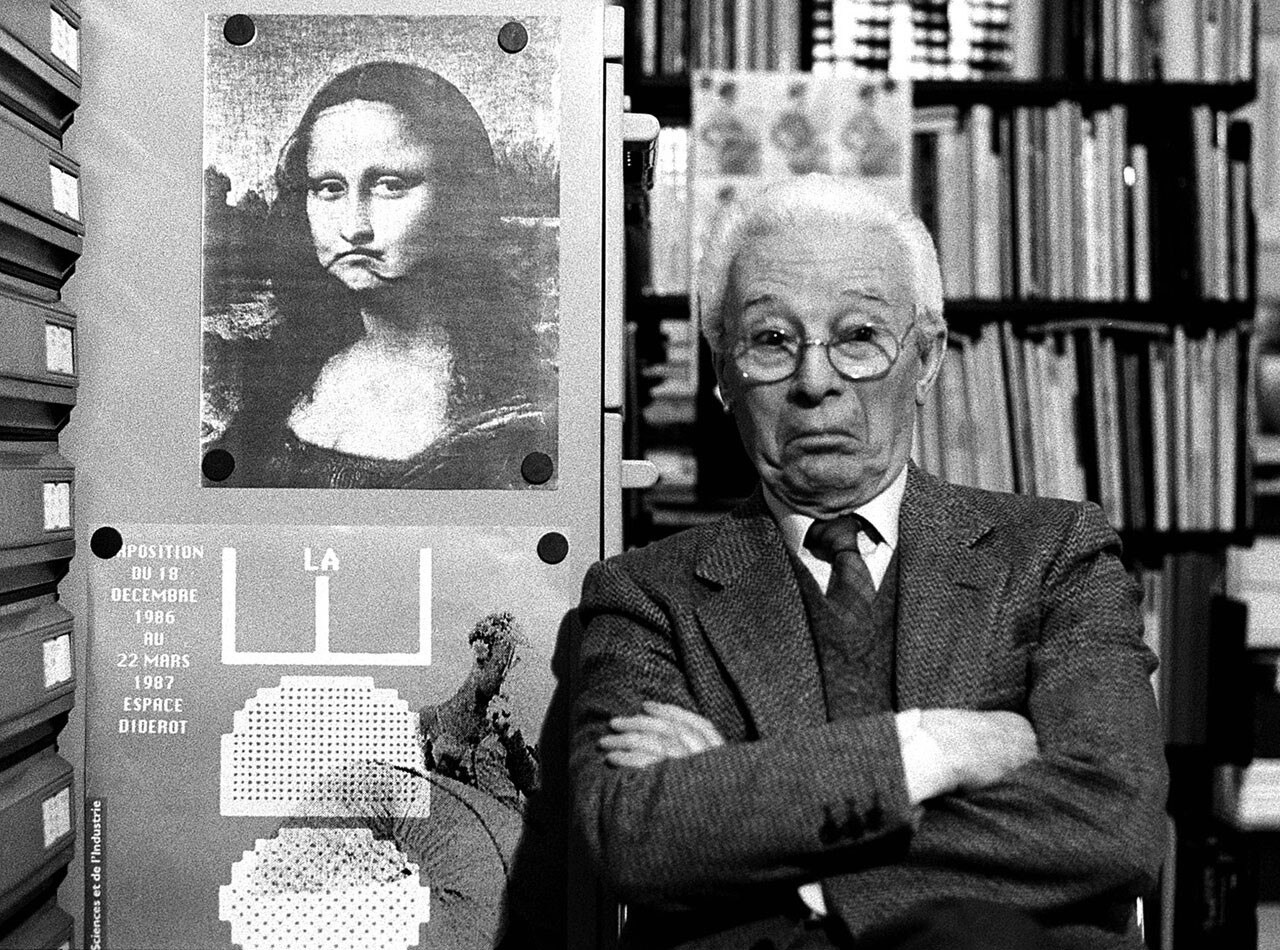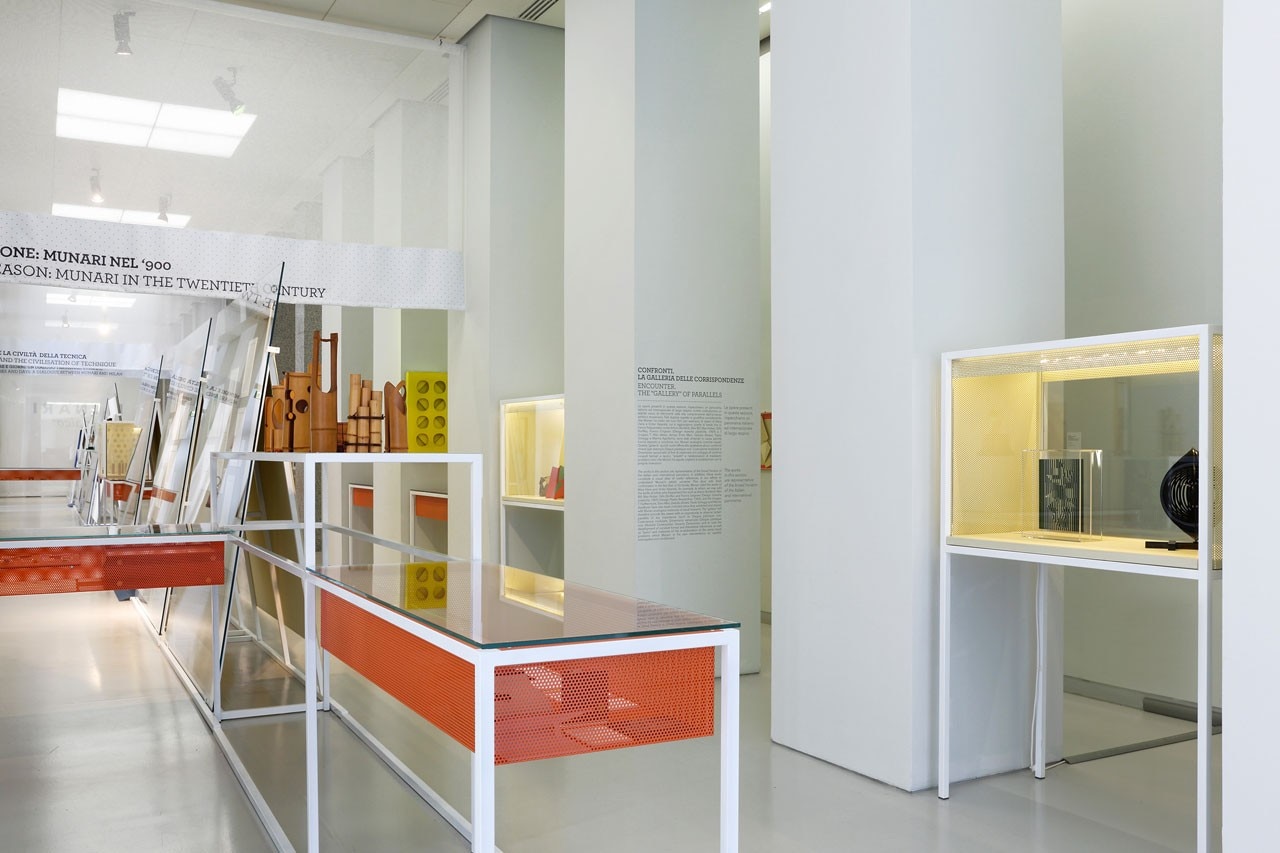
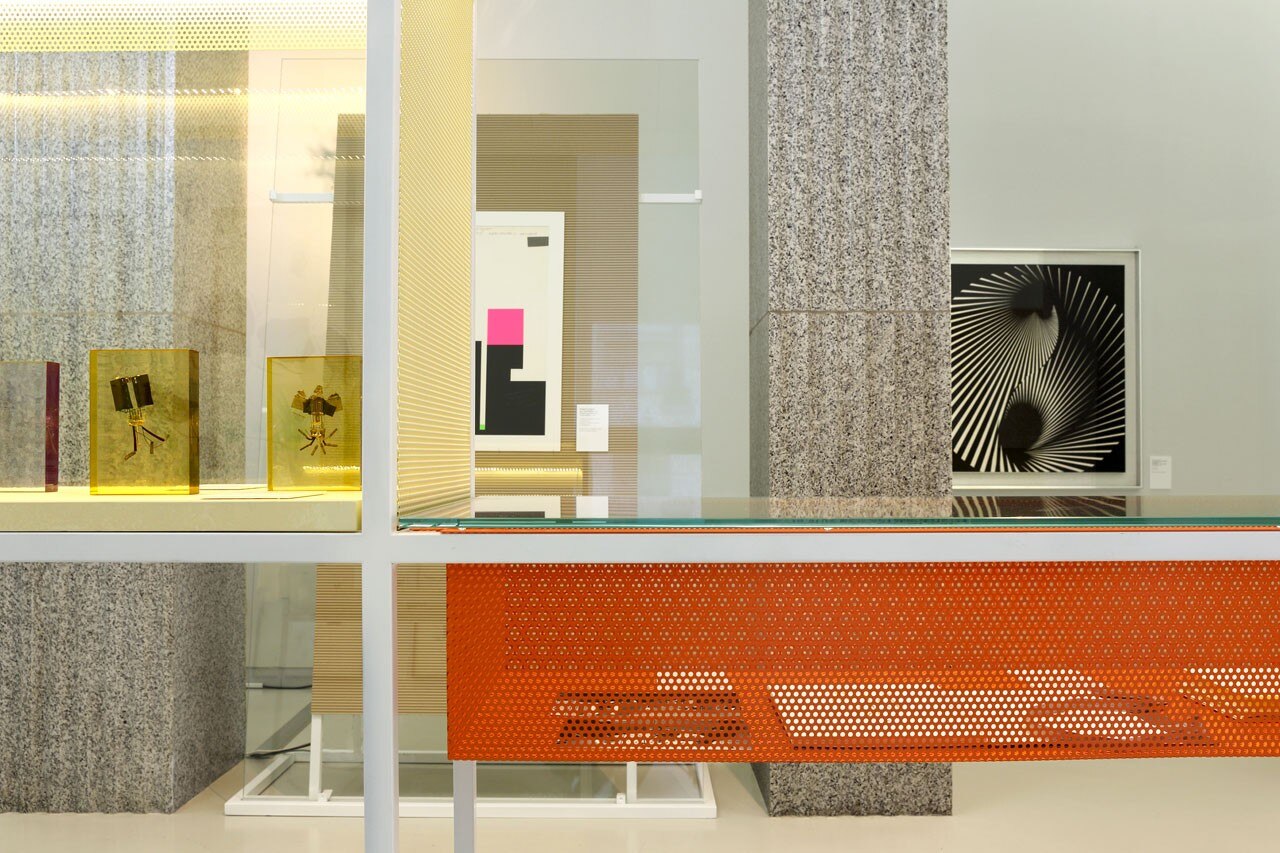
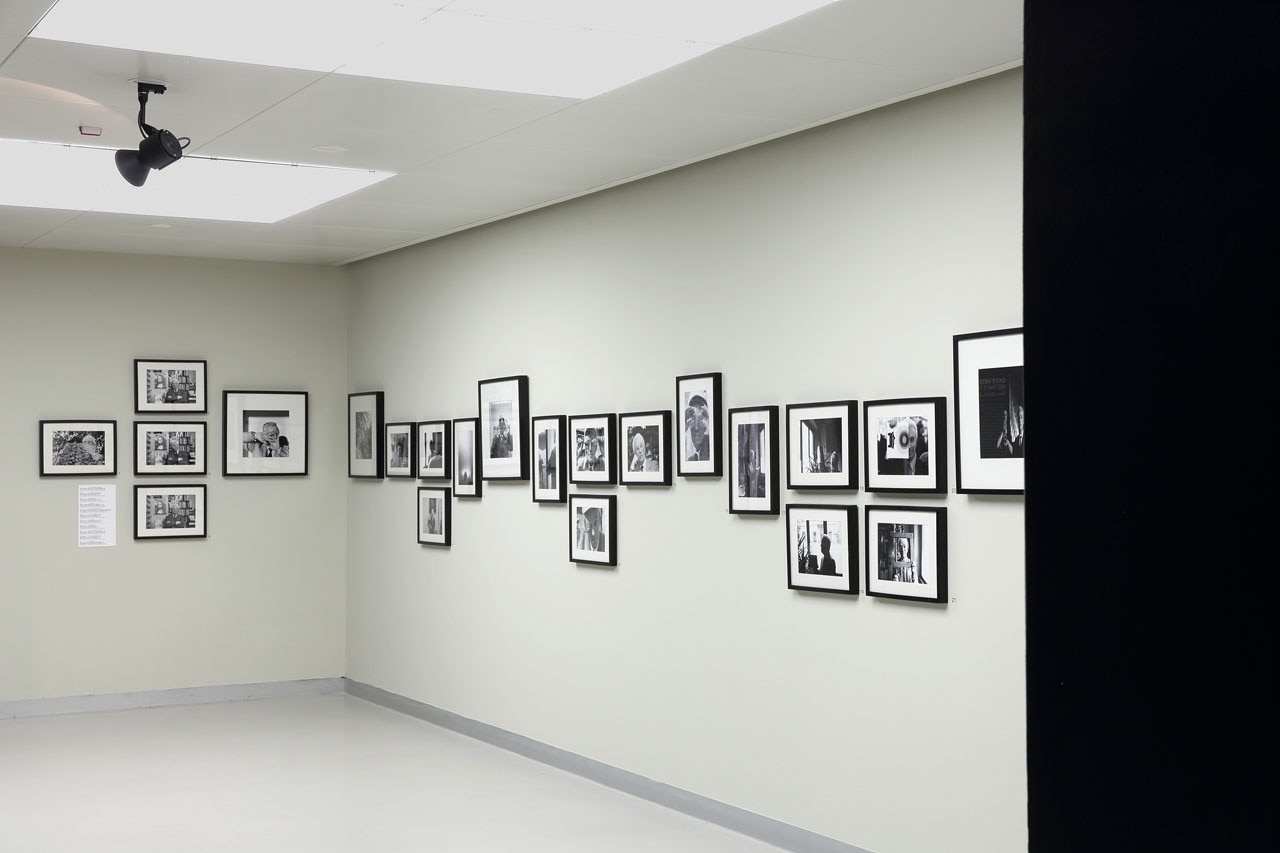
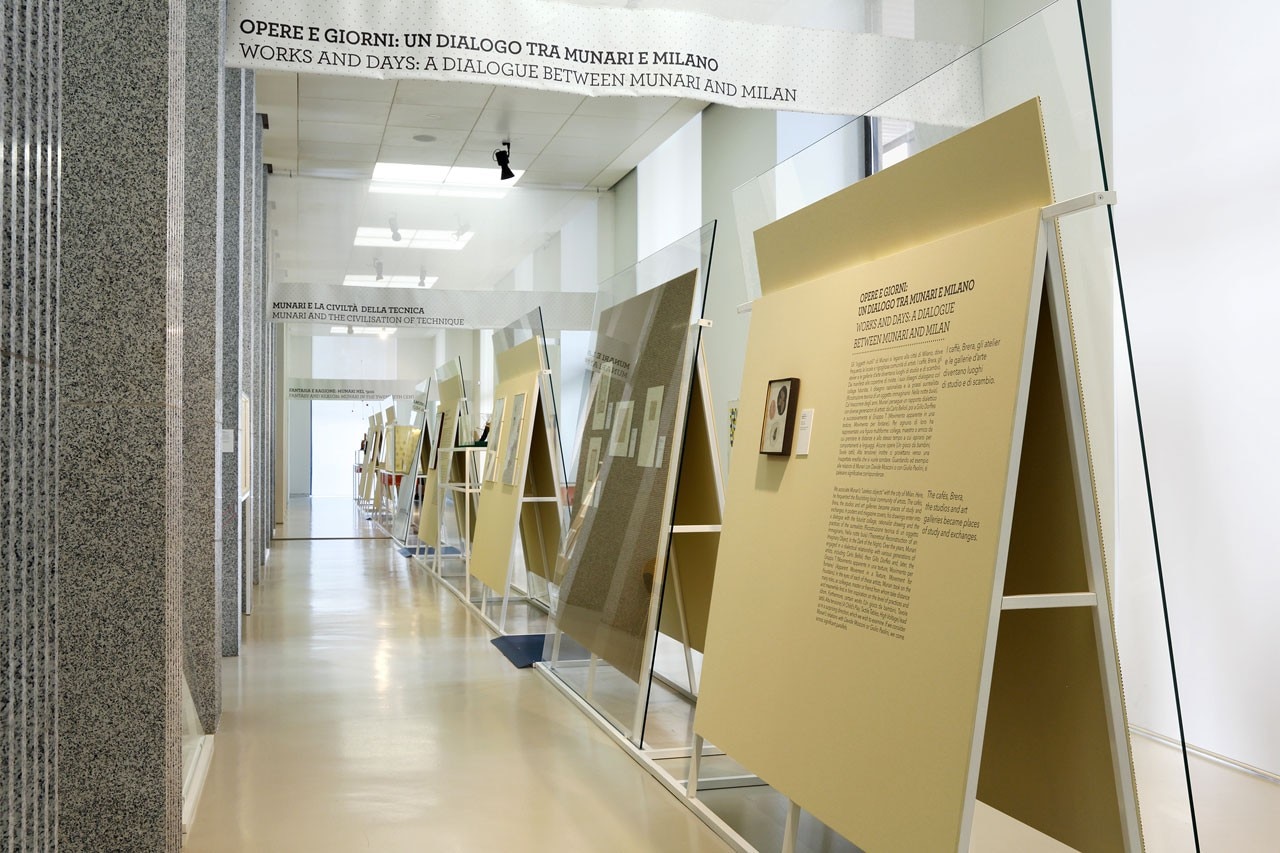
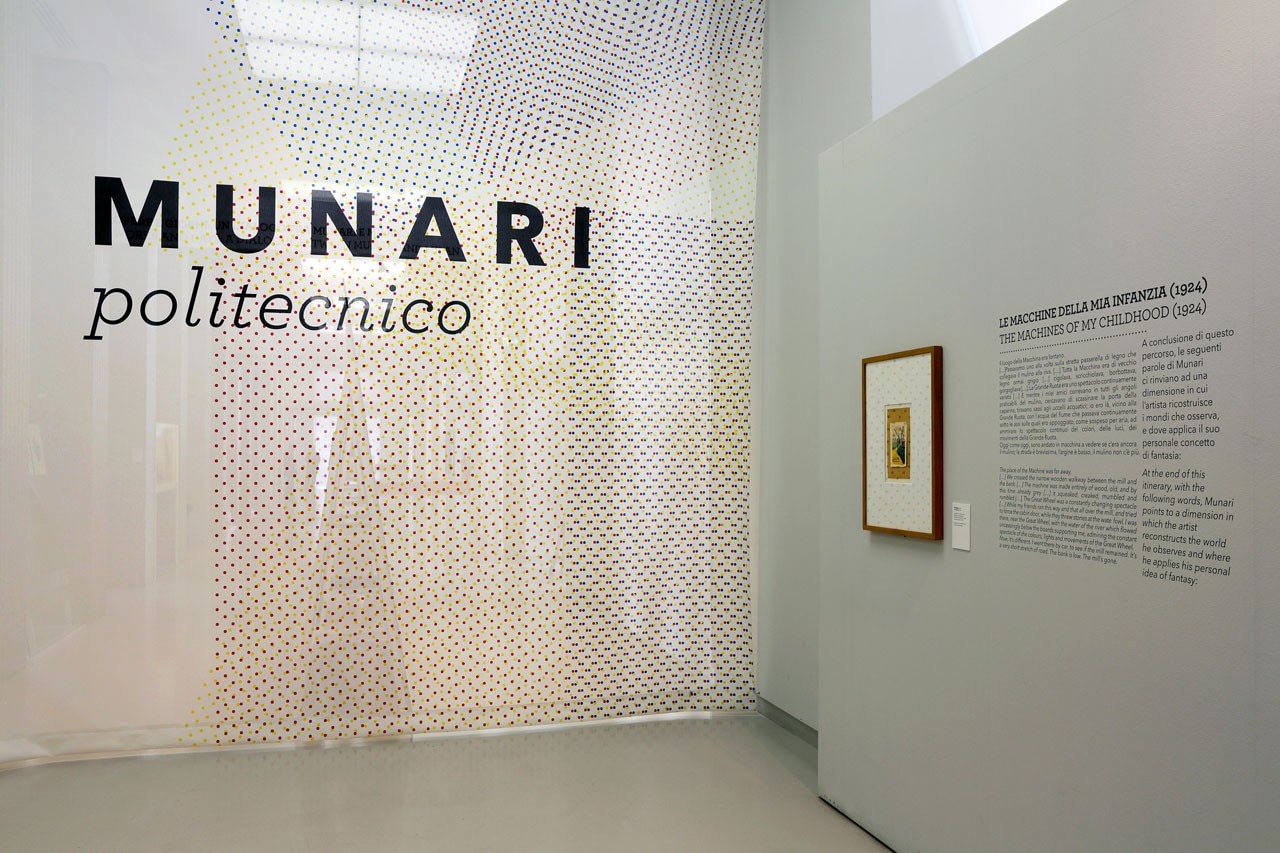
It was a way of subtracting himself from the practice of painting. It was a way to capture the everyday technological world: the new forms were those of the Sputnik, televisions and cars. To bring it into art, Munari not only made many things (Strutture Continue) for Bruno Danese but also imagined an archeology of the future, taking an ironic approach to the idea itself of progress (Fossili del 2000). The programmed works (Colonna a sfere, Tetracono) form a dialogue with the functional forms of technology, in this they were among the first electronic brains but remain "objects" that are deliberately useless (Colori Rotanti, Rotori). While in the "objects" there is the intervention of the machine (Fontana Zen, Bambù, Xerografie originali, Le forchette) this is inhibited by the use of organic materials or via the unrepeatable gesture of the author. It was a way of subtracting himself from the practice of painting. It was a way to capture the everyday technological world: the new forms were those of the Sputnik, televisions and cars. To bring it into art, Munari not only made many things (Strutture Continue) for Bruno Danese but also imagined an archeology of the future, taking an ironic approach to the idea itself of progress (Fossili del 2000). The programmed works (Colonna a sfere, Tetracono) form a dialogue with the functional forms of technology, in this they were among the first electronic brains but remain "objects" that are deliberately useless (Colori Rotanti, Rotori). While in the "objects" there is the intervention of the machine (Fontana Zen, Bambù, Xerografie originali, Le forchette) this is inhibited by the use of organic materials or via the unrepeatable gesture of the author.
In a continuous interplay between art and science (Curve di Peano, Tensioni), Munari does not limit himself to mere perceptive data (Proiezioni diretti) but demands the critical participation of the spectator". Munari loved to talk to ordinary people more than to specialised critics; we discover an anthropological side characterised by the continual exchange with the personalities of his time who collaborated and shared dreams and passions with him. “He was a man among men. He desired continual exchange with colleagues, friends, scholars and more in general with people who were free and curious like children. In the exhibition this dimension is found in the gallery of correspondences that describes some of his relationships with different generations of artists with whom he has exhibited and shared similar visual research”.
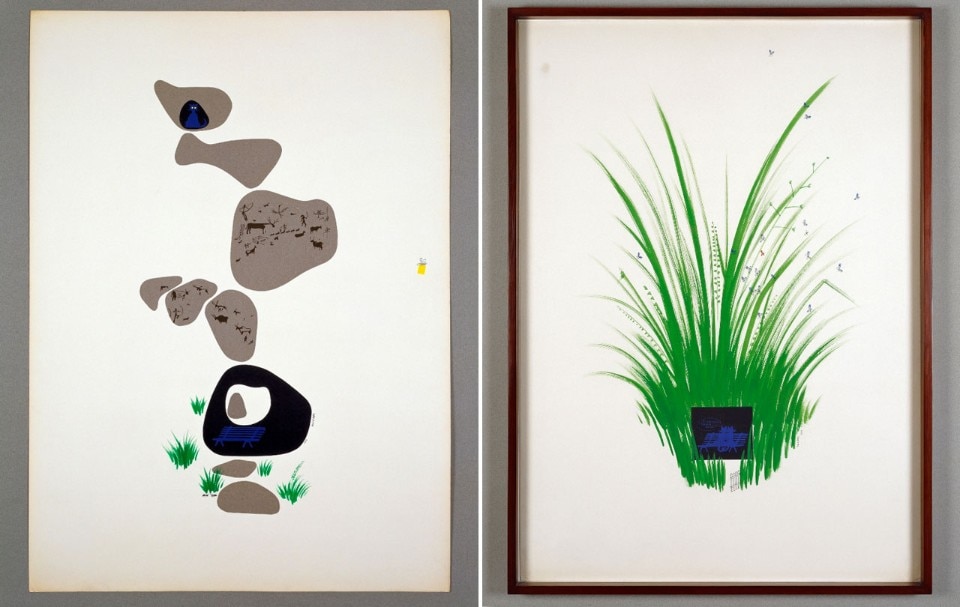
Until 7 September 2014
Munari politecnico
Museo del Novecento
Palazzo dell’Arengario
Via Marconi 1, Milan




